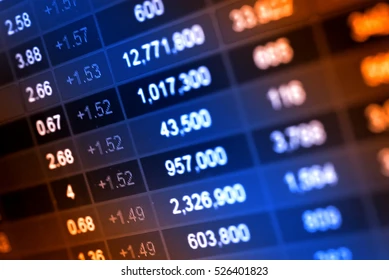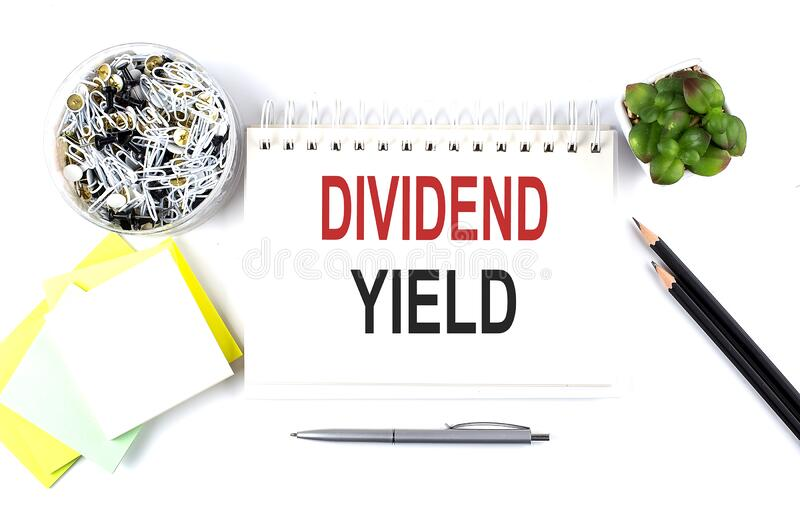A Complete Guide About Dividend Yield on a Stock
Nov 13, 2023 By Triston Martin
Introduction
Companies pay dividends from their profits and reinvest the rest into the company. Companies often reward their stockholders with dividend payments. When analyzing a firm's financial performance, investors can get a sense of their potential return on investment by looking at the dividend yield. In most cases, this figure is presented as a percentage. The dividend yield is calculated as follows:
Dividend Yield = Cash Dividend per share / Market Price per share * 100.
Assuming a stock is trading at Rs 100, the corporation decides to pay a dividend of Rs 10 per share. That would make the stock's dividend yield 10% (10% multiplied by 100). Stocks with a high dividend yield provide a stable source of income and are a safe bet during market uncertainty. These are your investments if you're not willing to take much of a chance. However, one must consider the company's value and dividend history before investing.
Understanding Dividend Yield
The dividend yield of an investment is the annualized rate of return (in the form of dividends) on the initial capital outlay required to acquire that investment. It quantifies the return on investment (ROI) generated by tips. Return on investment for a stock without considering capital gains is represented by its dividend yield. Let's pretend ABC Company's stock sells for $20 per share, and the company pays out annual dividends of $1 per share. Let's say XYZ Inc. stock sells for $40 and pays dividends of $1 per share per year. The dividend yield for Company ABC is 5% (1 20), but that for XYZ is only 2.5% (1 40). Considering all other circumstances, an investor seeking to generate passive income from their portfolio would be better off purchasing ABC's stock than XYZ's stock due to the former's twice as high dividend yield.

Example of Dividend Yield
Imagine shares of Company A are selling for $20 per share, and the company has a dividend payout history of $1 per share per year. Let's pretend that Company B's stock shares are now selling for $40, and the company also distributes a $1 dividend per share each year. The dividend yield for Company A is thus 5% ($1 / $20), and the dividend yield for Company B is only 2.5% ($1 / $40). Company A offers twice the dividend yield of Company B. Therefore, an investor who wants to use their portfolio to augment their income would choose Company A over Company B.
How To Calculate Dividend Yield From Quarterly Or Monthly Dividends?
Dividends are paid on stocks on a quarterly, monthly, semiannual, and annual basis. Annualizing the compensation means multiplying the value of a single payment by the number of payments per year, four for companies that pay quarterly dividends and 12 for firms that pay monthly. This will give you the dividend yield of the stock. It may be best to invest in dividend-paying stocks that do so once a month if you want to receive your dividend payments as frequently as feasible. Real estate investment trusts (REITs) make up most of the monthly payers. Some tax breaks are available to these businesses, making them possible and necessary to distribute more enormous dividends than their peers.
Why Is Dividend Yield Important?
The primary benefit of learning about dividend yield is identifying the best dividend-paying stocks to put your money into. The benefits listed above are essential, but there are a few more to consider.
Dividend Yields Make It Easy to Compare Stocks
If you are primarily an income investor, you should evaluate and choose stocks with the highest dividend yield. The absolute dividend amount you receive per share is a less helpful indicator because companies have wildly varied stock values.
Increasing Dividend Yields Indicate Financial Health
When a firm decides to increase its dividend payment to shareholders, the dividend yield rises, signaling to buyers that the company is performing well enough to distribute a more significant portion of its earnings.
Evaluating Dividend Yield
Dividing yield helps find the best investment opportunities to meet your income goals. To be more specific, a dividend yield can benefit you by:
- Using the yield, it is much simpler to evaluate how a stock's share price stacks up against its competitors. It's a positive sign if the product is comparable to similar investments in the same market.
- Checking the dividend yield is an excellent first step in determining a company's financial health. Stocks with a high dividend yield showing dividend growth over time are the safest bets.

Conclusion
Divide the amount of money a firm pays its shareholders each year by the current stock price to get the dividend yield, which is expressed as a percentage. Dividends are more common among established businesses. Utilities and consumer staples companies typically have greater dividend yields than other businesses. Higher-than-average dividends are paid by real estate investment trusts (REITs), master limited partnerships (MLPs), and business development corporations (BDCs), but investors must pay a higher tax rate on these profits. Investors should remember that greater dividend yields do not always signify attractive investment possibilities because a firm's dividend yield may be elevated due to a dropping stock price.

Susan Kelly May 21, 2024
Finding Minimum Wage: A State-by-State Look in 2024
96482

Elva Flynn Oct 02, 2024
What Does the Volatility Index (VIX) Indicate? A Beginner's Guide
41326

Triston Martin Oct 02, 2023
How Do Health Insurance Deductibles Work: A Complete Understanding
30773

Susan Kelly Jan 24, 2024
All About Delayed Draw Term Loan
27477

Triston Martin Dec 13, 2023
The Financial Conduct Authority: What Is It?
76185

Susan Kelly Feb 20, 2024
A Guide to ACH: How Money Moves Around Without Checks
69560

Susan Kelly Oct 01, 2024
Holiday Schedule: U.S. Stock Exchanges and Market Closures
76299

Triston Martin Nov 13, 2023
A Complete Guide About Dividend Yield on a Stock
33883